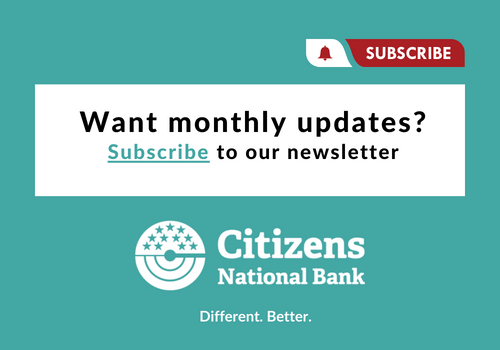Understanding The PPP Audit Process
03/29/2022
By: CNB

The Small Business Administration (SBA) has begun auditing Paycheck Protection Program (PPP) loan forgiveness applications for both First Draw and Second Draw PPP loans, including for both for profit and nonprofit organizations. As part of these audits, the SBA is requesting supporting documentation for the loan calculation, affiliation, the eligible expenses incurred, and the loan necessity analysis. Thus far, SBA audits have focused primarily on loans of $2 million or more, but the SBA may expand its review to smaller loans. The reasoning behind this process, in part, stems from the high level of fraud that was committed by bad actors during both phases of the program. A recent congressional report has estimated there could be in excess of $1.0 Billion dollars of funds received fraudulently.
SBA Audits
In most cases, the borrower's bank serves as the intermediary in an SBA audit, with all correspondence going through the bank. The SBA often gives tight time frames within which to respond. A failure to respond in a timely manner to a document or information request could result in an adverse decision against the nonprofit or other entity that received the loan. Thus, as a practical matter, borrowers that have submitted loan forgiveness applications should be alert for communications from their bank. In some audits, the SBA may simply inform the borrower's bank that it is reviewing the loan file, requiring the bank to notify the borrower of the SBA review and upload all documents related to the PPP loan within 15 days. This type of audit does not identify any specific issues the SBA is considering. Other times, the SBA notifies the borrower's bank that the SBA is requiring the borrower to respond to specific issues.
Responding to the SBA Audit
Borrowers should be prepared to provide a comprehensive response to the SBA audit. Even when the SBA notifies the bank that the borrower must respond with regard to specific issues, the borrower should provide documents and information relevant to any potential issues, not just the issues identified by the SBA. If the SBA issues an adverse decision denying loan forgiveness, an appeal of the SBA's decision would be based on the SBA file as it stands at the time of the decision. On appeal, the borrower may have limited opportunities to supplement the record. Thus, borrowers should provide a comprehensive response demonstrating their entitlement to the PPP loan and the forgiveness of the loan.
SBA document requests may be duplicative of documentation submitted with the loan forgiveness application or documentation previously provided during the review process. Focusing the attention of the SBA reviewer and providing supporting documentation in an organized fashion are important. A cover letter or other narrative response that establishes eligibility for forgiveness and explains the documentation being provided is helpful.
Importantly, an SBA audit or investigation can take place after a PPP loan is forgiven, as the statute of limitations for an audit or investigation is generally six years. Borrowers should retain all files and records related to a PPP loan and forgiveness application for at least this long.
Appeal Process
There are four potential reasons why the SBA may deny full forgiveness of a PPP loan: (1) the borrower was ineligible for the loan; (2) the borrower was ineligible for the amount received or the borrower used the loan proceeds for unauthorized purposes; (3) the borrower is found ineligible for partial loan forgiveness by the lender that issued its decision to the SBA; and/or (4) the borrower is deemed wholly ineligible for loan forgiveness by the lender and the lender has issued a full denial decision to SBA.
If a borrower receives a full or partial SBA denial of loan forgiveness and wishes to appeal, the borrower must file a written appeal with the SBA Office of Hearings and Appeals (OHA) within 30 calendar days of receipt of the final SBA loan review decision. Appeals must be submitted through the OHA Case Portal, and if the appellant borrower has not yet begun paying back its lender for its loan, the borrower should send a copy of the appeal to its lender so that the lender can continue to defer the borrower's repayment for the duration of the appeal process.
After receiving an appeal, the OHA assigns the matter to an administrative law judge. The judge's decision must be based solely on the administrative record, the appeal petition, any responses, and any supplemental pleadings and filings. The standard of review is "clear error of fact or law," and the burden is carried by the appellant. Once a judge's decision becomes final, that final decision can be appealed to the appropriate federal district court (the rules don't provide any additional context for this process).
Finally, in addition to the federal district court appeals process, the SBA administrator has the authority to review and reverse OHA decisions. Within 30 days of the service of an OHA decision or the service of a reconsidered OHA decision, the SBA administrator can elect to review or reverse the OHA judge's decision. If the administrator chooses to review or reverse an OHA decision, the administrator's decision becomes final upon issuance. The SBA administrator's authority to review or reverse an OHA decision does not create any right to an additional appeal, and there are no statutory criteria that trigger the administrator's review—the power to review is at the administrator's sole discretion.
Conclusion
PPP loan borrowers have the burden of proof in establishing their eligibility for loan forgiveness. For Profit and Nonprofits with First or Second Draw loans of more than $2 million should be prepared to produce an organized, comprehensive response to an SBA audit. But we also recommend that ALL borrowers keep those files handy at least until 2027 in the event you are randomly selected for a PPP Audit.


